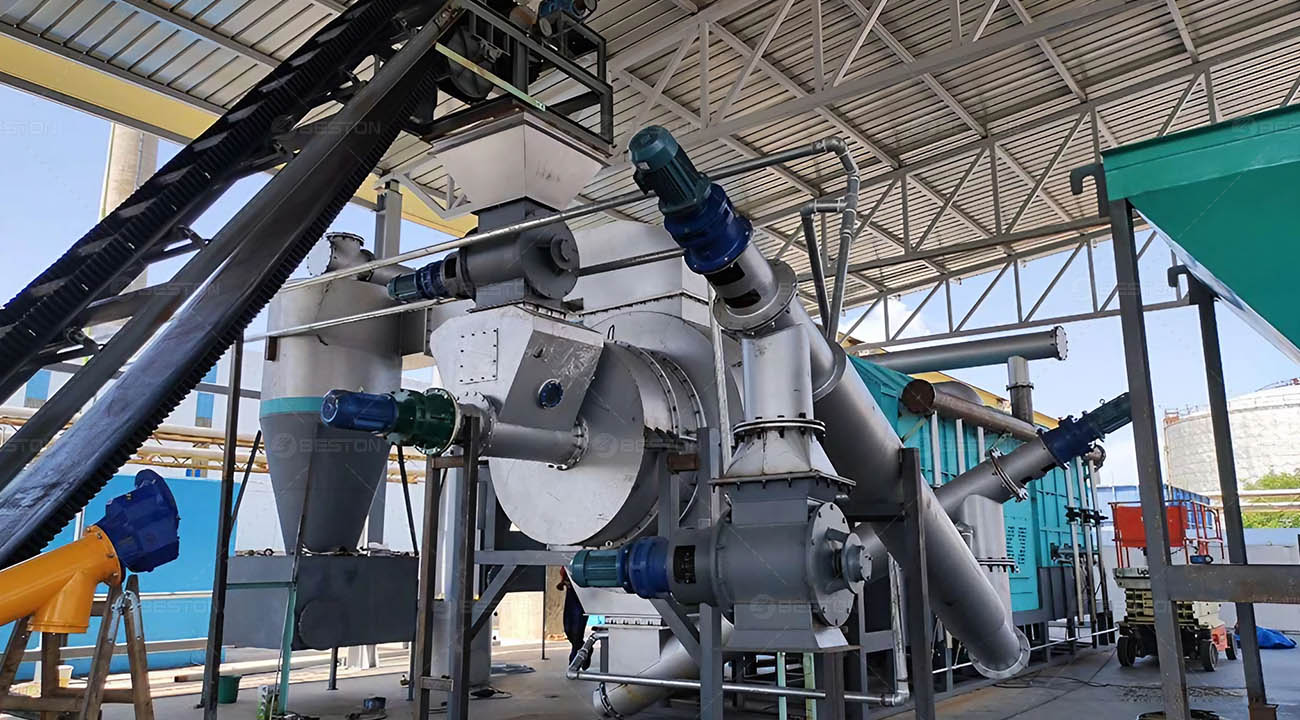In today’s world, where environmental sustainability is paramount, the effective management of waste biomass has emerged as a critical challenge. Waste biomass encompasses various forms of organic waste, from agricultural residues to industrial byproducts, all of which pose significant environmental and logistical issues. However, an innovative solution has been gaining traction in recent years: the wood charcoal machine.
Introduction
Definition and Significance
Waste biomass management involves the responsible handling and utilization of organic waste materials generated from various sources. This management is of paramount importance due to its potential environmental impact, including greenhouse gas emissions, pollution, and landfill overflow.
The Growing Challenge of Waste Biomass
As global populations and industrial activities continue to grow, so does the volume of waste biomass generated. This article explores how wood charcoal making machine plays a pivotal role in mitigating this challenge.
Understanding Waste Biomass
Types of Waste Biomass
Agricultural Residues
Agricultural activities generate substantial residues, including crop and animal waste. These residues, if not managed properly, can lead to soil degradation and pollution.
Forest Residues
Forestry operations produce vast quantities of wood waste, from branches to sawdust. Without effective management, this waste can contribute to deforestation and wildfires.
Municipal Solid Waste
Urban centers produce enormous quantities of organic waste, often ending up in landfills or incineration plants, which can harm the environment.
Industrial Waste
Industries, especially those involved in food processing and timber production, generate significant amounts of organic waste that pose disposal challenges.
Environmental Implications
Greenhouse Gas Emissions
Decomposing organic waste in landfills releases methane, a potent greenhouse gas that contributes to global warming.
Landfill Overflow
Overflowing landfills can contaminate nearby soil and water, posing health hazards and further damaging ecosystems.
Air and Water Pollution
Uncontrolled burning or improper disposal of waste biomass can result in air and water pollution, affecting human health and wildlife.
The Role of Wood Charcoal Machines
What is a Wood Charcoal Machine?
Principles of Operation
Wood charcoal machines employ pyrolysis, a thermal decomposition process, to convert organic waste into charcoal, biochar, and other valuable products.
Components and Functionality
These machines consist of various components, such as reactors, condensers, and gas recycling systems, working harmoniously to achieve efficient waste conversion.
Conversion of Waste Biomass to Charcoal
Pyrolysis Process
Pyrolysis involves heating organic materials in the absence of oxygen, causing them to break down into charcoal and volatile gases.
Biochar Production
Biochar, a byproduct of pyrolysis, enhances soil fertility and carbon sequestration, making it a valuable resource.
Sustainability and Resource Efficiency
Carbon Neutrality
The carbon released during pyrolysis is balanced by the carbon sequestered in biochar, rendering the process carbon-neutral.
Reduced Landfill Waste
Wood charcoal machines drastically reduce the volume of waste biomass sent to landfills, alleviating environmental stress.
Charcoal as a Valuable Byproduct
Apart from biochar, the production of charcoal can serve as a valuable energy source or industrial material.

Benefits of Utilizing Wood Charcoal Machines
Environmental Advantages
Reduction in Greenhouse Gas Emissions
By diverting organic waste from landfills, charcoal machine helps curb methane emissions.
Charcoal as a Soil Amendment
Biochar improves soil structure and nutrient retention, promoting sustainable agriculture.
Economic Benefits
Income Generation from Charcoal Sales
The sale of charcoal and biochar can create income opportunities for communities and industries.
Job Creation
The operation and maintenance of wood charcoal machines generate employment, especially in rural areas.
Energy Generation
Heat and Power Production
Charcoal can be used as a clean and renewable source of heat and power generation.
Carbon-Neutral Energy Sources
Charcoal-based energy production aligns with sustainability goals, reducing reliance on fossil fuels.
Industrial Biomass Utilization
Wood Charcoal Machines in Manufacturing
Industries that generate wood waste, such as timber processing and furniture manufacturing, are using wood charcoal machines to convert waste into valuable charcoal for energy or production processes.
Waste Reduction in Industry
By integrating wood charcoal machines into their operations, industries can significantly reduce waste disposal costs and contribute to a more sustainable approach to waste management.
Future Trends and Innovations
Advancements in Wood Charcoal Machine Technology
Automation and AI Integration
As technology evolves, wood charcoal machines are becoming more automated and integrated with artificial intelligence systems to optimize processes and reduce operational costs.
Improved Energy Efficiency
Research and development efforts are focused on enhancing the energy efficiency of wood charcoal machines, making them even more sustainable.
Sustainable Charcoal Markets
Carbon Credits and Trading
The potential for carbon credits and trading related to carbon-neutral charcoal production is gaining attention, providing additional incentives for businesses and communities.
Certification Programs
The establishment of certification programs for sustainably produced charcoal and biochar products can boost consumer confidence and market demand.
Integration with Circular Economy Concepts
Biomass Recycling and Upcycling
The integration of wood charcoal machines into circular economy models emphasizes the recycling and upcycling of waste biomass, creating a closed-loop system.
Waste Biomass Valorization
By exploring new applications and markets for charcoal and biochar, waste biomass can be fully valorized, minimizing waste and maximizing resource utilization.
Conclusion
In conclusion, wood charcoal machines represent a significant leap forward in waste biomass management. These innovative devices not only address the growing challenge of waste biomass but also contribute to environmental sustainability, economic growth, and the development of circular economy models. As technology continues to advance and awareness of their benefits spreads, wood charcoal machines are poised to play a pivotal role in shaping a more sustainable and eco-friendly future.
The importance of responsible waste biomass management cannot be overstated. By embracing the potential of wood charcoal machines, we can turn organic waste into valuable resources, reduce environmental harm, and create a greener, more sustainable world.

Comments
No comments yet. Be the first to react!